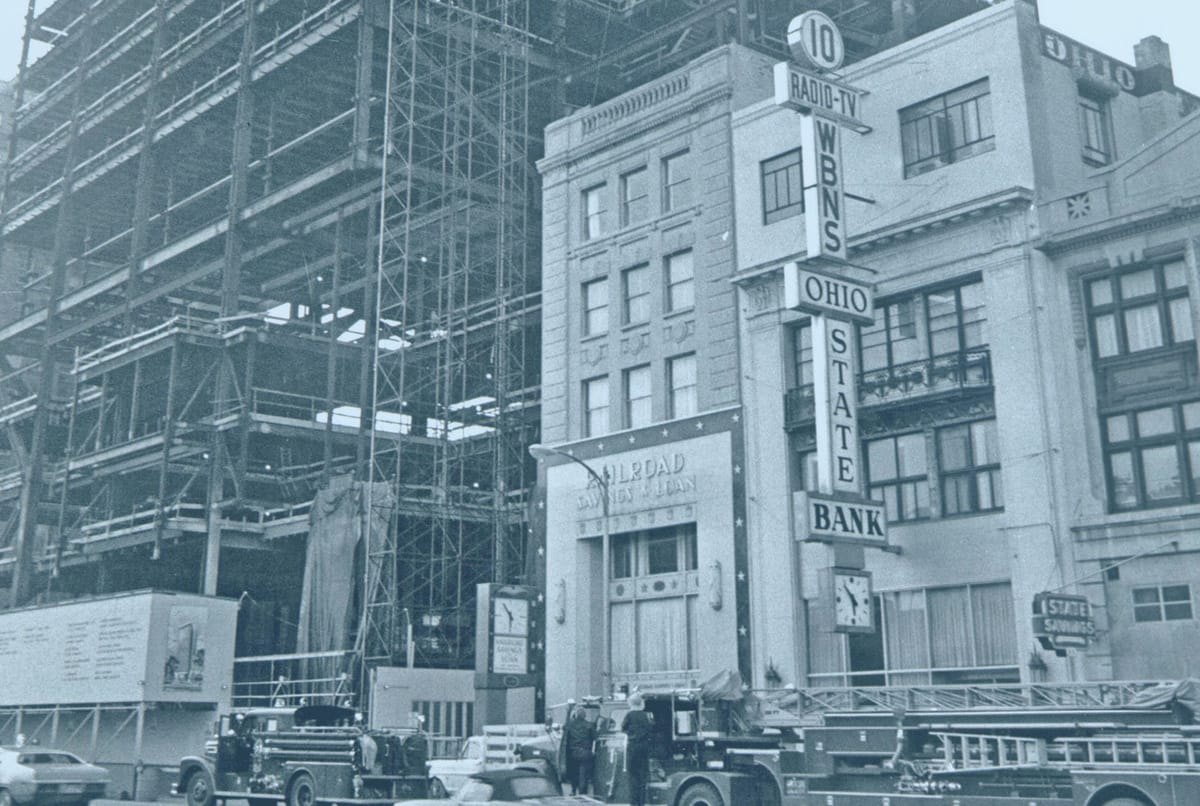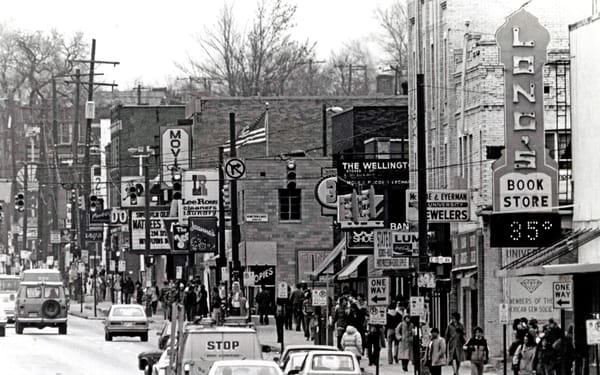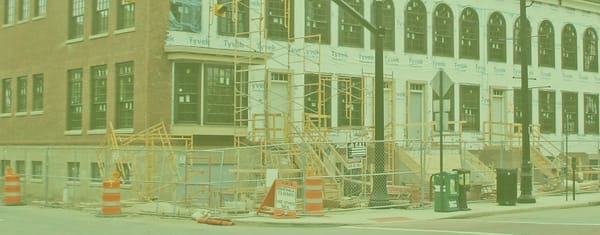Population trends, a small victory, and a LOT of links.
People need homes—even in *your* neighborhood!

Hello again, neighbor! And welcome to Neighbors for More Neighbors—Columbus. We are a grassroots group of residents who support building more housing in our growing region.
Build 🔨 more ⬆ housing 🏘
The numbers are in: We’re growing and we need more housing—now.
The numbers are in! The U.S. Census Bureau released updated population numbers for 2020 and nerds across Ohio are rejoicing. Initial evaluations illustrate that Central Ohio is continuing to grow rapidly while the remainder of Ohio, generally speaking, is stagnating or even shrinking.
According to The Columbus Dispatch: “The population of 905,748 is a 15% rise over where Columbus was during the last census, in 2010, when it had 787,033 people in city limits. That's compared to a 7.4% population growth in the United States and a 2.3% growth in Ohio. In both the state and the nation, most growth is happening in urban areas more than rural.”
Much of our growth continues to be suburban and exurban sprawl, swallowing up fertile farmland and scenic countryside for auto-dependent development. Supporting dense, compact redevelopment projects can help people live a car-optional lifestyle and create inter-generational communities that allow people without driving ability (or means) to age in place with dignity and security.
Neighbors for More Neighbors—Columbus advocates for the re-population of Columbus’ urban core, which was home to tens of thousands more people in the mid-20th century. Growth should be concentrated where utility infrastructure already exists, not in the countryside where millions of dollars in new costs to subsidize sprawling development is required.
Dispatch Editorial:“We have the people, but not the places to put them”
“You do not have to be looking for a place to live to know the housing market is on fire in central Ohio. The flames are not expected to be extinguished anytime soon. The projected growth will be a curse if the demand for housing — both affordable and not-so-affordable — is not met with supply. We have the people, but not the places to put them. Last year saw an 11,864 increase in new homes and apartments, but that fell short of the 14,000 to 21,000 residences a 2018 report says the region would need to add every year to keep up with demand through 2050.”
At Neighbors for More Neighbors—Columbus, we believe new residents aren’t a negative social cost to be prevented. Rather, new neighbors are a net positive social gain to be embraced and welcomed.
Small Victory: Housing proposal for E. 7th Avenue Approved by University Area Commission
Next, the University Impact District Review Board (UIDRB) will review the project, giving feedback on design and ultimately deciding how it will proceed.
A proposal to add 150 housing units at 50-60 E. 7th Avenue in Weinland Park was approved by the University Area Commission in August, after encountering opposition at the same commission’s Zoning Committee earlier in the month. The proposed project adds important affordable housing units and replaces an outdated, suburban-style building that puts parking before people.
The proposal was fully reviewed by residents and the developer made important changes through facilitated meetings that were open to everyone over a six-week period, resulting in a Memorandum of Understanding (MOU) documenting commitments and agreements. This process covered dozens of topics in a short period, instead of taking months (or a year) of what can often be unproductive debate through conventional neighborhood zoning review processes.
The Weinland Park Community Civic Association supported the MOU and zoning variances by a vote of 24 to zero. Neighbors voted unanimously to support the parking variance. (Yes, you read that right!) The corridor and blocks surrounding High Street are one of the few places in Central Ohio where people can walk, bike, and take the bus to meet their daily needs, and there is a grocery store right across the street. Adding critical housing units to this transit-rich and walkable neighborhood is highly prudent during a regional housing crisis, and the project even includes affordable units. Furthermore, the census tract that contains this site has less housing units than it did in 1960 and over 1,000 fewer people.
Learn more about the unique process that led to the UAC’s approval of this project! If you have questions about this project, or others, use the comment feature below.
A TON of housing links for your reading pleasure!
If you have fun links to share, please send them our way.
The Housing Shortage Is Significant. It's Acute For Small, Entry-Level Homes (NPR, 4 September 2021)
North Market project back on track, now with 31-story tower (Columbus Dispatch, 1 September 2021)
Franklin County approves funding to help those facing eviction (Columbus Messenger, 1 September 2021)
Columbus developer Brad DeHays plans to redevelop former Value City complex into affordable housing (Columbus Business First, 31 August 2021)
Church and Developer Partner on Mt. Vernon Avenue Apartments (Columbus Underground, 24 August 2021)
More Columbus-area home sellers drop asking price (Columbus Dispatch, 24 August 2021)
Ground breaking housing options coming to Urbancrest (Columbus Messenger, 24 August 2021)
Opinion: Developers rule Columbus, shed 'crocodile tears for the consumer' (Guest Columnist Kevin Cox, Columbus Dispatch, 24 August 2021)
Excerpt: “If the price of housing on the city’s edge reflected the real costs of development – new highways, new schools, new parks – then housing closer in would get more attention from buyers. Sure there are the German Villages and Bexleys of the world, but what I show in my book is that between 2011 and 2016, average home values declined in 23 of the city’s 40 ZIP code areas.”Our View: A cowtown no more, but what will Columbus become? (Columbus Dispatch, 22 August 2021)
The labor shortage is also an affordable housing problem (Columbus Alive, 20 August 2021)
Downtown Columbus population tops 10,000, but will it continue to rise if workers stay home? (Columbus Dispatch, 18 August 2021)
New Design Proposed for Affordable Apartments Downtown (Columbus Underground, 18 August 2021)
As developers and gentrification move in, some Milo-Grogan residents take a stand (Columbus Dispatch, 18 August 2021)
Lincoln Village neighborhood on Columbus' Far West Side is among nation's hottest housing markets (Columbus Dispatch, 13 August 2021)
Brewery District shoe heel factory conversion hits opposition (Columbus Dispatch, 12 August 2021)
Columbus' population now over 900,000: 4 numbers to know from census data (Columbus Dispatch, 12 August 2021)
Columbus homes sold fastest in nation during July (Columbus Dispatch, 11 August 2021)
Council Approves Development on Former Giant Eagle Site (Columbus Underground, July 27)
Updated: Linden Proposal Pits New Affordable Housing Against Existing Jobs, Neighbors Say (Columbus Underground, July 27)
King and High Project Approved After Two-Year Process (Columbus Underground, 23 July 2021)
15-Story Building Proposed for Downtown (Columbus Underground, 21 July 2021)
Opposition from Abbott Leads to Delay in Kroger Bakery Proposal (Columbus Underground, 21 July 2021)
City’s License Section to Reopen with New Short-Term Rental Rules (Columbus Underground, 19 July 2021)
Unique Process Has Guided Weinland Park Development Proposal (Columbus Underground, 8 July 2021)
New Development at 8th and High Moving Forward (Columbus Underground, 2 July 2021)
Stay connected with N4MN—Columbus

If you appreciate this newsletter, consider buying us a coffee!




